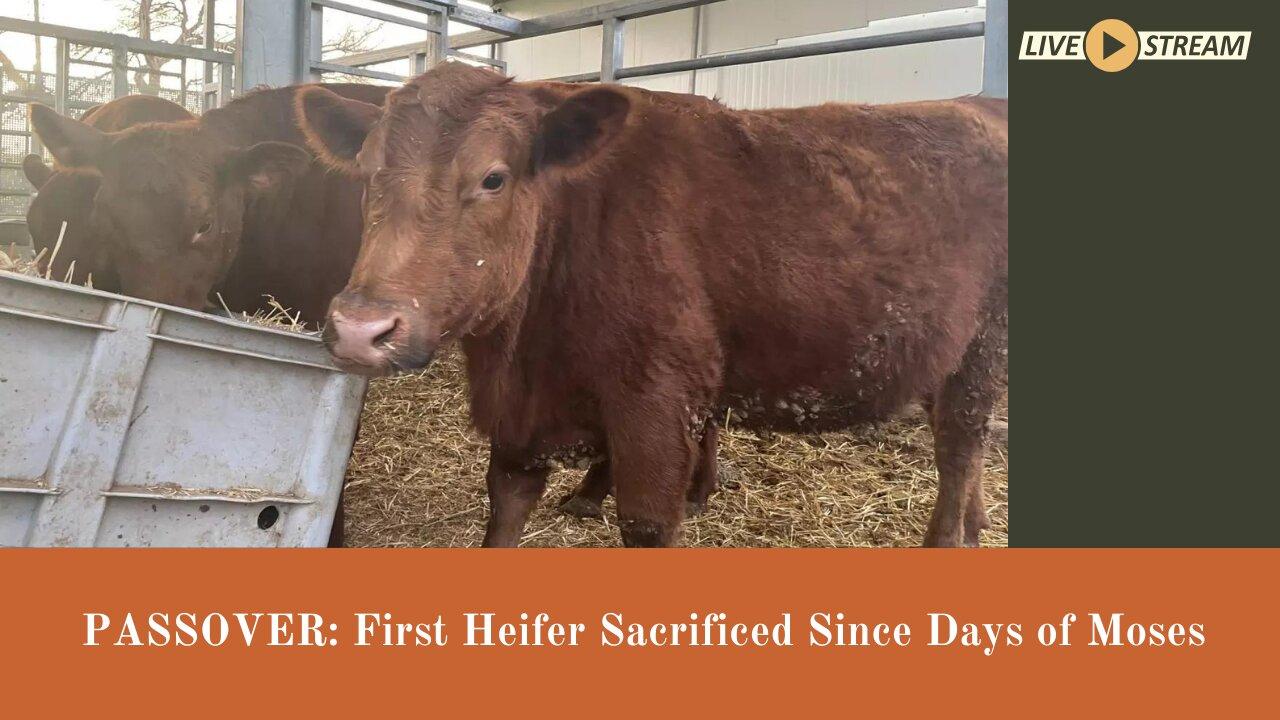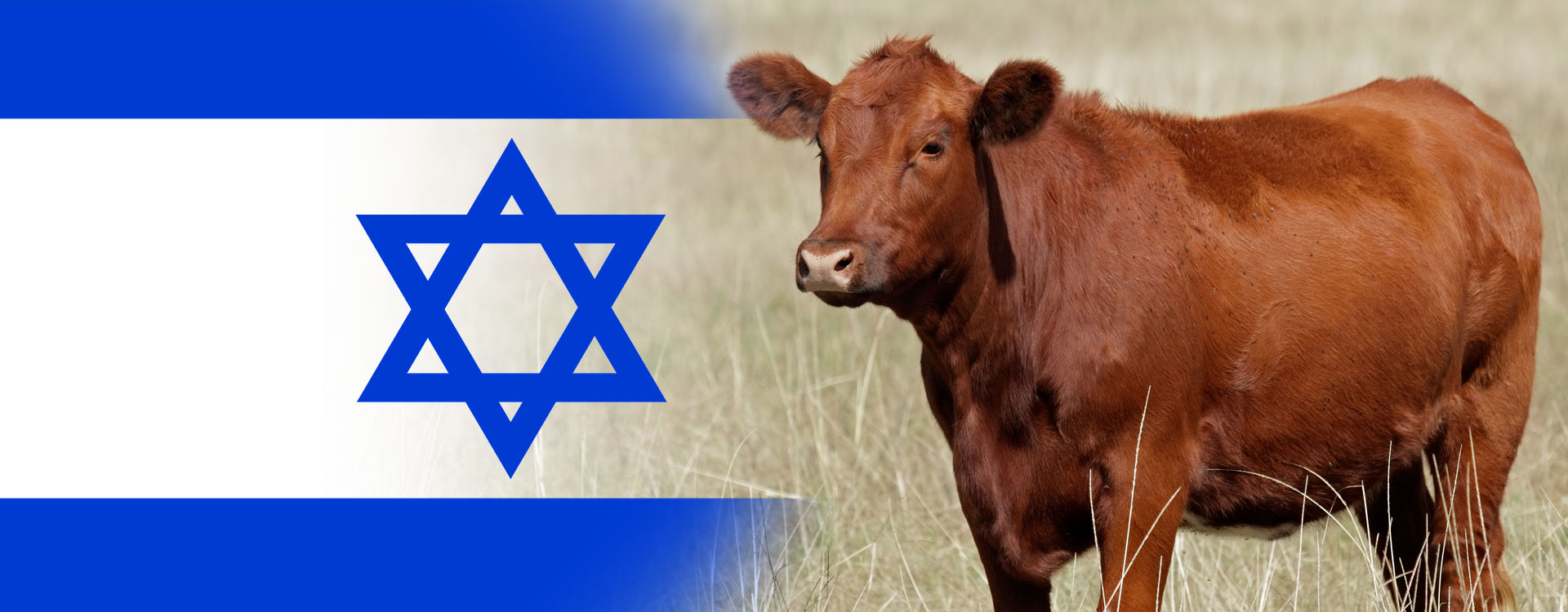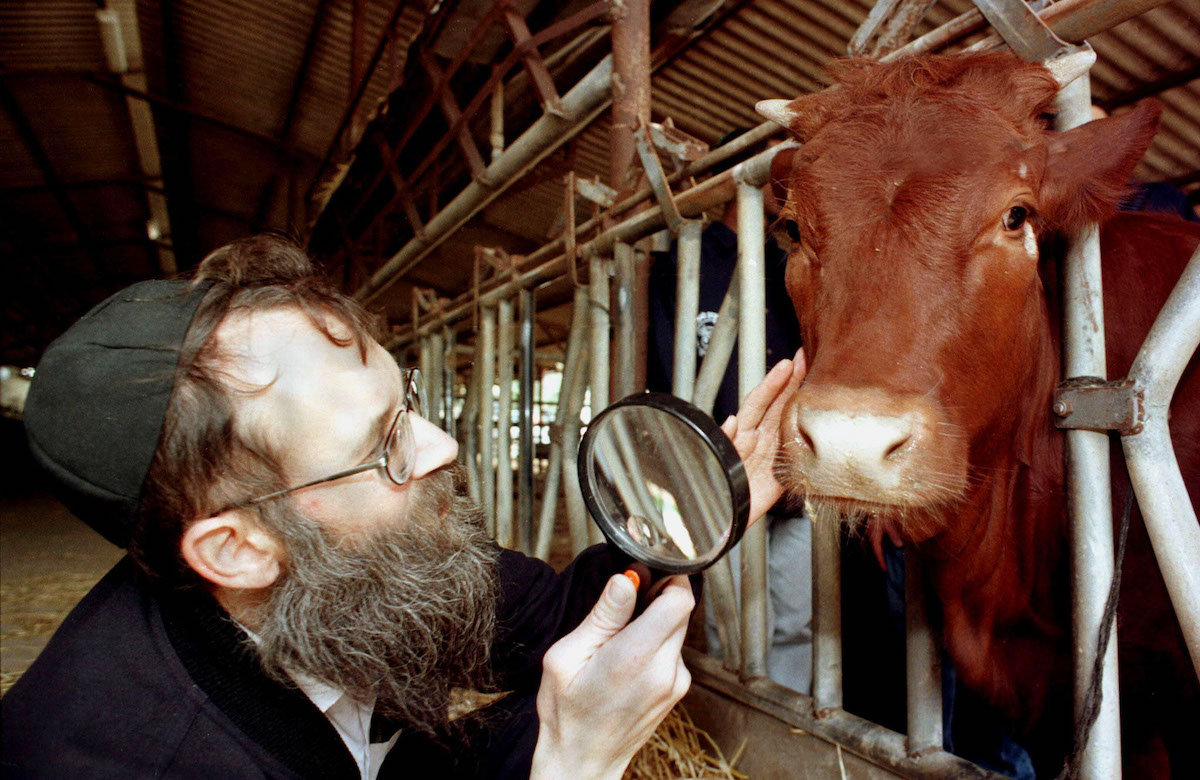The red heifer sacrifice 2024 has captured the attention of scholars, religious enthusiasts, and historians alike as one of the most significant rituals in Jewish tradition. This ancient practice holds deep spiritual and symbolic meaning, making it a topic of great interest for those seeking to understand its relevance today. As we approach the year 2024, anticipation is building around the potential revival of this sacred ritual.
The red heifer sacrifice is not merely a religious ceremony but a profound act that symbolizes purification and renewal. Rooted in the Book of Numbers in the Hebrew Bible, this ritual involves the sacrifice of a perfectly red-colored cow, which is then used to create ashes for purification rites. The ceremony has deep historical significance and continues to play a vital role in contemporary discussions about Jewish traditions and practices.
In this article, we will explore the intricacies of the red heifer sacrifice, its historical background, and its potential implications for 2024. Whether you are a student of religion, a cultural enthusiast, or simply curious about this unique ritual, this guide aims to provide comprehensive insights into the red heifer sacrifice 2024.
Read also:Aldi Planner 2024 Release Date All You Need To Know
Table of Contents
- The Historical Background of the Red Heifer Sacrifice
- Understanding the Red Heifer Sacrifice Ritual
- The Spiritual and Cultural Significance of the Red Heifer
- Preparations for the Red Heifer Sacrifice 2024
- Challenges Surrounding the Red Heifer Sacrifice
- Modern Perspectives on the Red Heifer Sacrifice
- Potential Impact of the Red Heifer Sacrifice in 2024
- Frequently Asked Questions About the Red Heifer Sacrifice
- Sources and Further Reading
- Conclusion and Final Thoughts
The Historical Background of the Red Heifer Sacrifice
The origins of the red heifer sacrifice date back thousands of years to biblical times. According to the Book of Numbers (19:1-22), the Lord instructed Moses and Aaron to perform a ritual involving a perfect red heifer. This ritual was designed to purify individuals who had come into contact with death, making it a crucial practice in ancient Jewish society.
Significance in Biblical Texts
In the Torah, the red heifer is described as "a sin offering" and its ashes are used to create a purification water. This water is essential for cleansing and restoring spiritual purity. The ritual underscores the importance of cleanliness and sanctity in Jewish traditions, emphasizing the need for spiritual renewal.
Historical Performances of the Ritual
Throughout history, the red heifer sacrifice has been performed only a few times. The rarity of finding a perfectly red heifer, combined with the stringent requirements for the ritual, has made it an exceptionally rare event. Historians estimate that the ritual was performed fewer than ten times in biblical history, further enhancing its mystique and significance.
Understanding the Red Heifer Sacrifice Ritual
The red heifer sacrifice is a complex ritual that requires meticulous preparation and execution. Below, we outline the key steps involved in the ceremony:
Steps in the Red Heifer Sacrifice
- Selection of the Heifer: The heifer must be entirely red, with no blemishes or imperfections. It must also be less than four years old and never yoked to a plow.
- Preparation of the Altar: The altar is set up outside the camp, as the ritual involves burning the heifer completely.
- Sacrifice and Burning: The heifer is sacrificed, and its body is burned along with cedar wood, hyssop, and scarlet yarn.
- Collection of Ashes: The ashes are collected and mixed with water to create the purification solution.
Each step of the ritual is imbued with symbolic meaning, reflecting the importance of purity and holiness in Jewish faith.
The Spiritual and Cultural Significance of the Red Heifer
For many, the red heifer sacrifice represents more than just a religious ceremony; it is a profound expression of faith and devotion. The ritual's spiritual significance lies in its role as a means of purification and restoration. By participating in or witnessing the ceremony, individuals reaffirm their commitment to living a holy and righteous life.
Read also:Unveiling The Secrets Of Dti Teddy Bear Code Your Ultimate Guide
Cultural Impact
Culturally, the red heifer sacrifice serves as a reminder of the rich traditions and customs that define Jewish identity. It fosters a sense of community and continuity, connecting modern practitioners with their ancient ancestors. The ceremony also highlights the importance of maintaining purity in both physical and spiritual realms.
Preparations for the Red Heifer Sacrifice 2024
As anticipation grows for the red heifer sacrifice 2024, various organizations and groups are actively preparing for the event. These preparations involve identifying a suitable red heifer, ensuring compliance with ritual requirements, and coordinating logistical arrangements.
Finding the Perfect Red Heifer
One of the most challenging aspects of the preparation process is locating a red heifer that meets the strict criteria outlined in the Torah. Breeders and religious authorities are working diligently to identify and verify candidates for the sacrifice. The discovery of a suitable heifer is seen as a significant milestone in the revival of this ancient practice.
Logistical Considerations
Organizing the red heifer sacrifice requires careful planning and coordination. From securing the location for the ceremony to ensuring the participation of qualified priests, every detail must be meticulously arranged. The involvement of experts in Jewish law and tradition is crucial to ensuring the ritual's authenticity and integrity.
Challenges Surrounding the Red Heifer Sacrifice
Despite the growing interest in the red heifer sacrifice 2024, several challenges remain. These challenges range from logistical hurdles to broader societal and political considerations.
Logistical Challenges
One of the primary challenges is the scarcity of suitable red heifers. The strict requirements for the animal make it difficult to find a candidate that meets all the criteria. Additionally, the location of the ceremony must be carefully chosen to ensure compliance with religious laws and local regulations.
Societal and Political Concerns
The revival of the red heifer sacrifice also raises questions about its implications for modern society. Some critics argue that the ritual could lead to increased tensions in regions where religious and political sensitivities are high. Others see it as an opportunity to promote interfaith dialogue and understanding.
Modern Perspectives on the Red Heifer Sacrifice
In contemporary times, the red heifer sacrifice continues to inspire diverse perspectives and interpretations. While some view it as a vital religious practice, others see it as a fascinating cultural phenomenon worthy of academic study.
Religious Perspectives
For many religious practitioners, the red heifer sacrifice is a sacred ritual that embodies the principles of purity and holiness. It serves as a reminder of the enduring relevance of ancient traditions in modern life.
Academic Interest
Scholars and historians are increasingly interested in studying the red heifer sacrifice as a means of understanding the evolution of religious practices over time. The ritual provides valuable insights into the cultural and spiritual practices of ancient civilizations.
Potential Impact of the Red Heifer Sacrifice in 2024
The red heifer sacrifice 2024 has the potential to impact various aspects of society, from religious practices to cultural traditions. Its revival could inspire renewed interest in ancient rituals and foster a deeper appreciation for the rich heritage of Jewish culture.
Religious Implications
For religious communities, the red heifer sacrifice 2024 represents an opportunity to reconnect with their spiritual roots and reaffirm their commitment to traditional practices. It may also serve as a catalyst for increased participation in religious ceremonies and activities.
Cultural Relevance
Culturally, the ceremony could inspire a renewed interest in Jewish traditions and customs, encouraging people to explore their heritage and embrace their cultural identity. The event may also serve as a platform for promoting interfaith dialogue and understanding.
Frequently Asked Questions About the Red Heifer Sacrifice
Below are some common questions and answers about the red heifer sacrifice:
What is the red heifer sacrifice?
The red heifer sacrifice is an ancient Jewish ritual involving the sacrifice of a perfectly red-colored cow. The ashes of the heifer are used to create a purification solution, which is essential for cleansing and restoring spiritual purity.
Why is the red heifer sacrifice significant?
The red heifer sacrifice holds deep spiritual and cultural significance, symbolizing purification and renewal. It serves as a reminder of the importance of maintaining purity in both physical and spiritual realms.
Will the red heifer sacrifice occur in 2024?
Efforts are underway to revive the red heifer sacrifice in 2024. However, the success of the ceremony depends on several factors, including the availability of a suitable heifer and compliance with religious and logistical requirements.
Sources and Further Reading
For those interested in learning more about the red heifer sacrifice, the following sources provide valuable insights:
Conclusion and Final Thoughts
The red heifer sacrifice 2024 represents a unique opportunity to explore the rich traditions and customs of Jewish culture. By delving into the history, significance, and implications of this ancient ritual, we gain a deeper appreciation for its enduring relevance in modern times.
We invite you to share your thoughts and insights in the comments section below. Your feedback and questions are valuable to us and help enrich the conversation around this fascinating topic. Additionally, feel free to explore other articles on our site for more in-depth discussions on religion, culture, and history.


